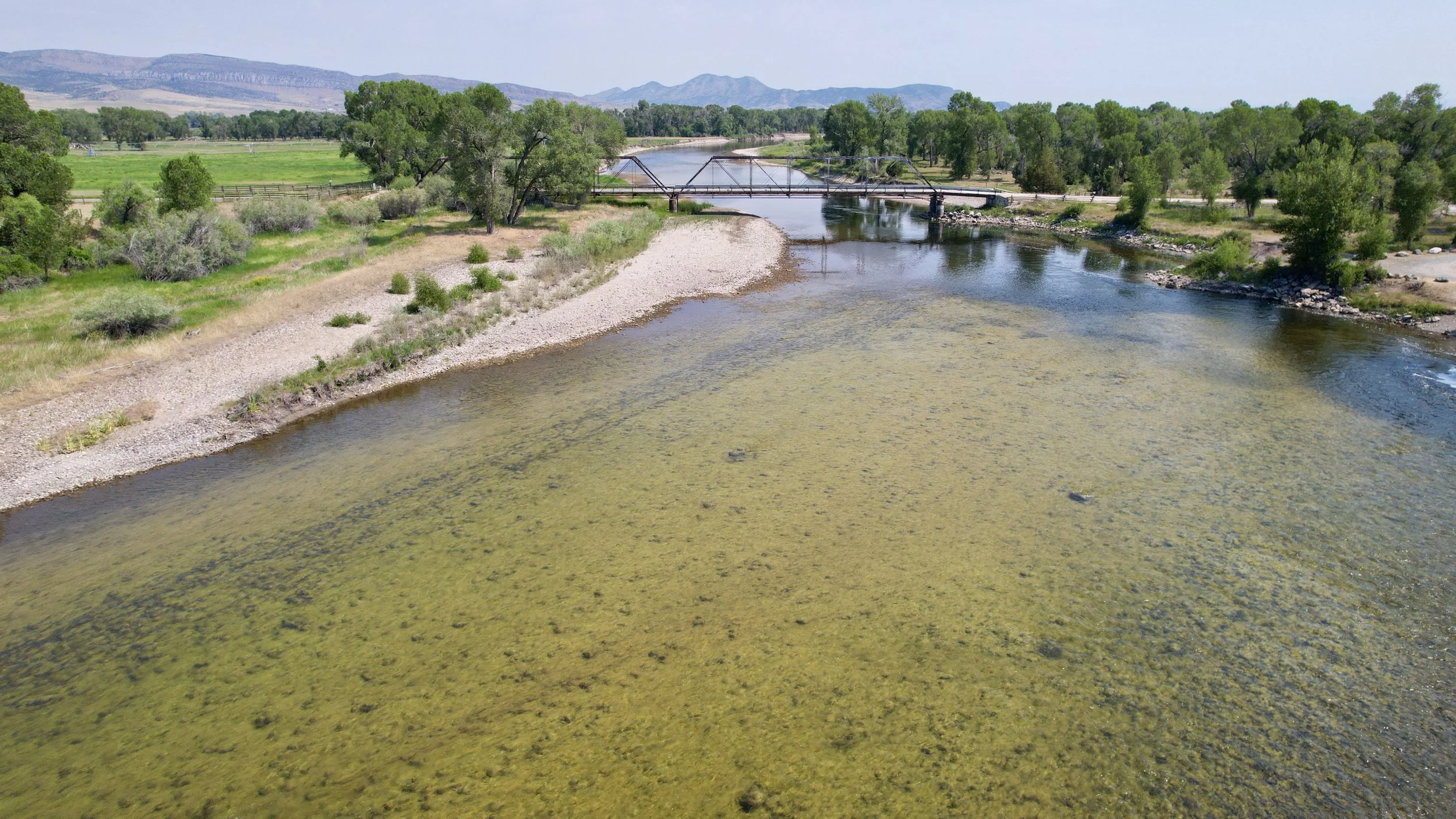Save Wild Trout Summer Update
Update: SWT Water Quality Monitoring Program in Jefferson Basin
This June 2024, Save Wild Trout launched a Jefferson basin-wide water quality monitoring program in response to Montana Fish, Wildlife, and Parks (FWP) 2023 data revealing historic lows of brown and rainbow trout populations.
Throughout the summer, SWT will be gathering the most robust water quality data set in the basin via three methods that include:
Monitoring water quality parameters, including temperature and oxygen, two key factors influencing trout viability, with data loggers at 32 locations across the Big Hole, Beaverhead, Ruby, and Jefferson rivers;
Measuring water temperature from guide boats using flow path approaches; and
Conducting a thermal infrared flight to provide a basin-wide snapshot of cold water refugia and fish habitat during the critical summer period.
Due to constraints in state agencies' budgets that prohibit extensive water quality monitoring, SWT's data and analysis will help fill in the gaps and be used to understand the drivers behind Southwest Montana's fishery collapses. Currently, baseline data on the Jefferson Basin's rivers is nonexistent outside of the data collected and submitted to the Montana Department of Environmental Quality by the Big Hole River Foundation, so the data collected by SWT will be critical to informing and guiding basin-wide management decisions, restoration opportunities, and long-term solutions that will improve water quality and bolster wild trout resiliency across Southwest Montana. Stay tuned for preliminary results from Dr. Kyle Flynn this fall.
Summer of Heat, Stressful Conditions & Hoot Owl Restrictions
From heat waves, to low flows, to algae blooms from excessive nutrient pollution, the Jefferson Basin is already under extreme stress. Recent USGS data indicates record-breaking water temperatures in the Big Hole and several other rivers in the region, and water temperatures in the Jefferson are nearing 80°F during the day which can be lethal for cold-water trout species.
To minimize stress to fish, FWP has implemented hoot owl fishing restrictions prohibiting fishing between 2pm and midnight on sections of nearly every river in Southwest Montana and other rivers across the state. Click here for more details on current fishing restrictions.
FWP's hoot owl restrictions are triggered when water temperatures reach or exceed 73°F for three consecutive days. Science on salmonids, however, tells us that trout exhibit elevated levels of stress once water temperatures reach 68°F. SWT continues to advocate - and encourages others to as well by contacting the Fish and Wildlife Commission - for improved hoot owl restrictions that would limit fishing when water temperatures reach 68°F. In the meantime, we encourage you to carry a thermometer and call it quits when water temperatures reach 68°F. Read more on how you can limit your impact on wild trout populations and pledge to be a responsible angler here.
SWT's Wade Fellin Featured in TRCP's "In the Arena"
Save Wild Trout's Wade Fellin was featured in the Theodore Roosevelt Conservation Partnership's "In the Arena" article, highlighting Wade's background as a lifelong angler (he's been floating the Big Hole since he was in a bassinet!) and how his love for Montana's outdoors led to his work preserving our natural resources for the next generation.
"This isn't about me, the lodge, or fly fishing for that matter. This is about us, our communities, and what they will look like next year, the year after that, and for future generations. We like to say Montana is "Next-Year Country," and I'd argue, particularly in southwest Montana, we are snowpack country. Snowpack sustains our limited clean water resources, and it is the foundation that drives nearly every aspect of our economy and well-being. When we set out to launch Save Wild Trout it was abundantly clear that our mission was simple: To protect wild trout now and for future generations. The values and connection to our waters and lands provided to me through fly fishing, hunting, and the outdoors is an opportunity I want my kids to have and enjoy."
Check out his full story here.
Bump Up in Fish Numbers, But There's Still Work To Do
After six years of declining wild trout populations culminating in historic lows last year across the Jefferson Basin, initial 2024 fish population counts by FWP show slight increases on the Big Hole River. While incremental increases in wild trout populations are something to celebrate, populations are still significantly below historic averages and summer 2024 will likely not bode well for our fisheries.
SWT has received numerous reports of sick and dead fish in the Jefferson Basin this summer and is working to get live diseased fish to FWP for analysis. FWP is also asking the public to report sightings of sick and/or dead fish on its online portal here. If you come across one of these fish, please document the fish and note the location to contribute to FWP's fish health study.
Although current river conditions are unfavorable, drought is plaguing much of the state, and wildfires are seemingly sparking every day, Save Wild Trout is making strides towards improving science-based management for our wild trout fisheries to preserve them now and for future generations. Thank you for your continued support of wild trout, and as always, reach out to info@savewildtrout.org if you have any insight or questions.





